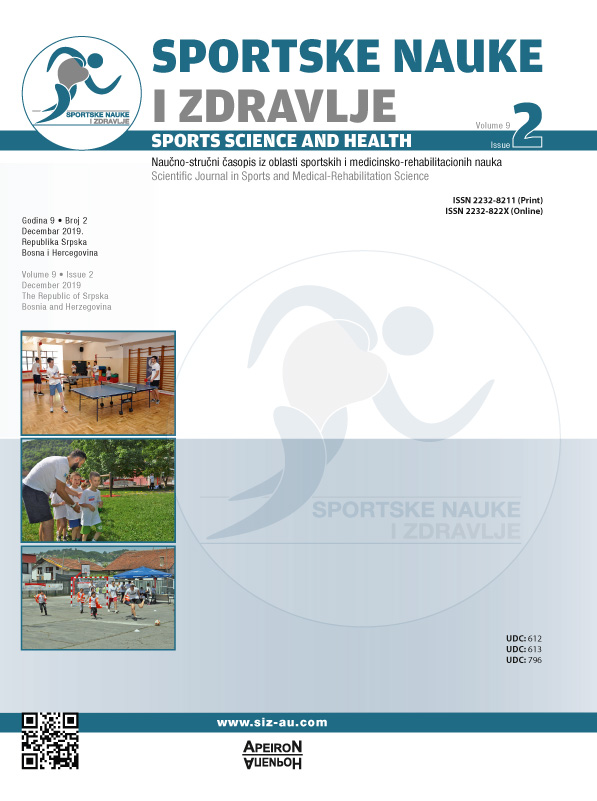Repeated Sprint Ability in Football Players at Different Levels of Competition / Sposobnost ponavljanja sprinta kod fudbalera različitog nivoa takmičenja
DOI:
https://doi.org/10.7251/SSH1902139ZAbstract
This research was conducted to identify differences in repeated sprint ability between football players at different levels of competition and to confirm the role of this ability as a predictor of elite performance in modern football. The study involved 30 football players from two ranks of competition (15 football players from the first rank of the competition and 15 football players from the third rank of the competition). The RSA test consisted of 6 sprints at a distance of 30 meters with an active rest between two sprints of 20 seconds. Total sprint time and average sprint time were calculated for all subjects in both groups. In addition to the total and average sprint time, a percentage decline in sprint performance was calculated. The results of the study showed a significant decline in the performance of sprint repetition in both groups of subjects. The sprint speed of all six reps was significantly higher for Division 1 football players, as shown by the times gained at a distance of 30 meters. In addition, Division 1 football players had a statistically better total and average sprint time compared to Division 3 players (p <0.01). The only performance parameter in which the players of different competition rank did not differ was the percentage decline in performance (p> 0.05). The conclusion is that professional football players have a better developed ability to repeat sprints than amateurs, which confirms the previously proven role of this ability in modern football.Downloads
Published
2020-03-03
Issue
Section
Чланци
